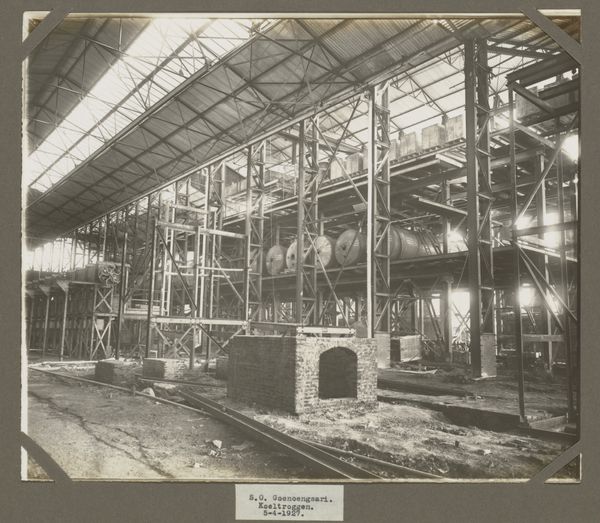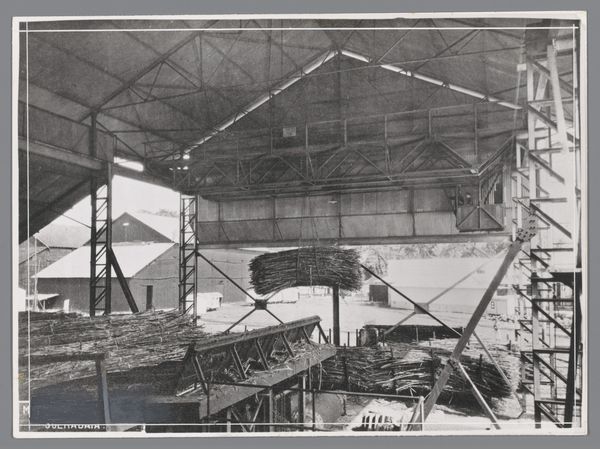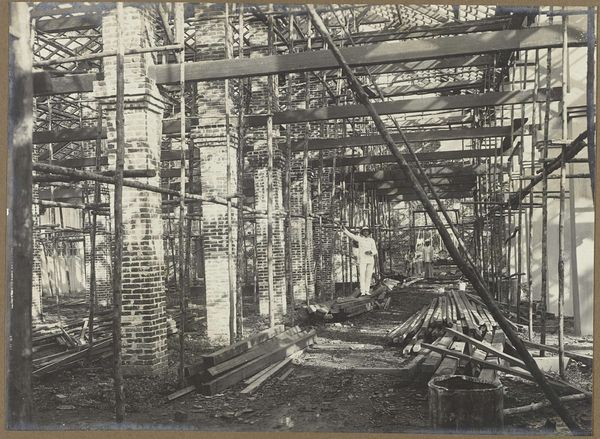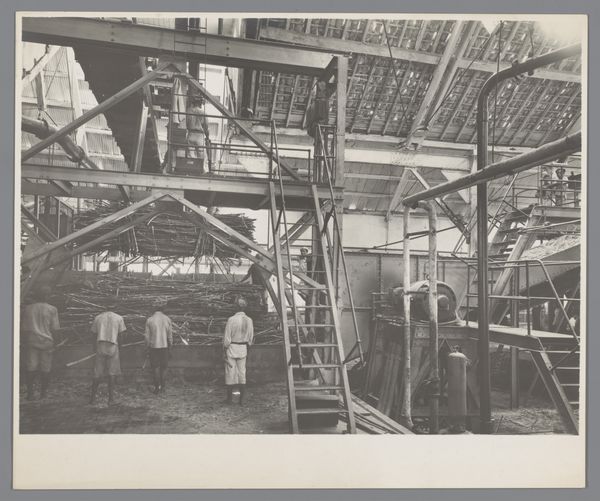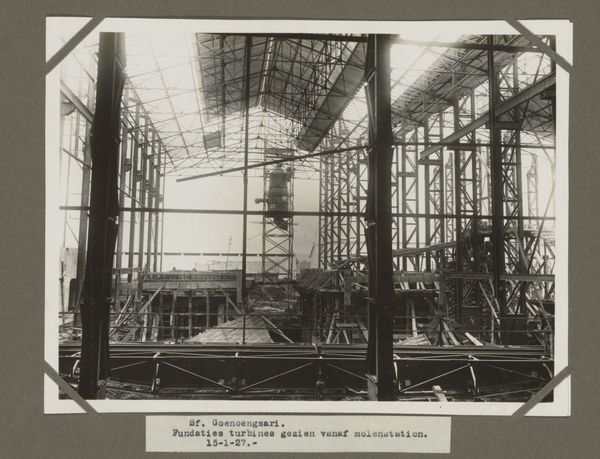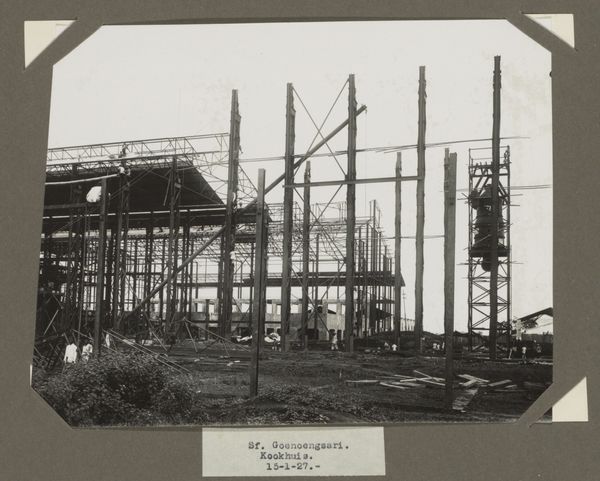
print, photography, gelatin-silver-print
# print
#
archive photography
#
photography
#
historical photography
#
gelatin-silver-print
#
realism
Dimensions: height 172 mm, width 231 mm
Copyright: Rijks Museum: Open Domain
Curator: This photograph, entitled "S.O. Goenoengsari. Carbonatatiestation. 8 Maart 1927," captures an industrial scene in 1927. The image is a gelatin-silver print, now housed in the Rijksmuseum collection. Editor: Immediately striking! The composition, with its network of scaffolding, conveys both the monumentality of industry and its precarious human construction. Curator: Absolutely. Examining the image through a postcolonial lens, one might consider the social and political dynamics inherent in such an industrial project during this era, particularly in Southeast Asia. The figures in the foreground could represent laborers whose stories are often obscured by the larger narrative of industrial progress. Editor: Indeed. Structurally, the photographer uses the sharp contrast between the dark foreground and the sunlit background to create a dynamic interplay of light and shadow. The scaffolding creates a complex web of lines, drawing the eye upward and reinforcing the immense scale. The workers add the sense of humanity amidst the geometrical. Curator: And the date itself, "8 Maart 1927," anchors us to a specific historical moment, compelling us to ask: Who were these workers? What were their lives like? What were the environmental implications of this "carbonation station" at the time, and how do they resonate today? Editor: If we approach it more through semiotics, each component acts like a signifier: the machines, scaffolding, workers, light, shadow. Together they denote the birth of industry at the moment this snapshot in time was preserved for reflection in its making. Curator: Considering those implications alongside gender and racial analyses of labor, for example, we uncover a more nuanced narrative of the era. How were indigenous populations and colonized peoples affected by these industrial endeavors? This photographic record offers us a critical perspective on globalization and the extraction of resources. Editor: It provides such complexity, yet on another level, one appreciates this scene as a simple configuration of vertical lines that contrast with circular tanks which soften the industrial scene's grid through form. Curator: Thinking about it this way highlights the many unseen labor networks and social consequences tied to these kinds of industrial enterprises. Editor: Right. Whether one focuses on pure aesthetics, historical contexts or labor networks. It becomes an enduring testament to human innovation—and a cautionary tale about progress.
Comments
No comments
Be the first to comment and join the conversation on the ultimate creative platform.

